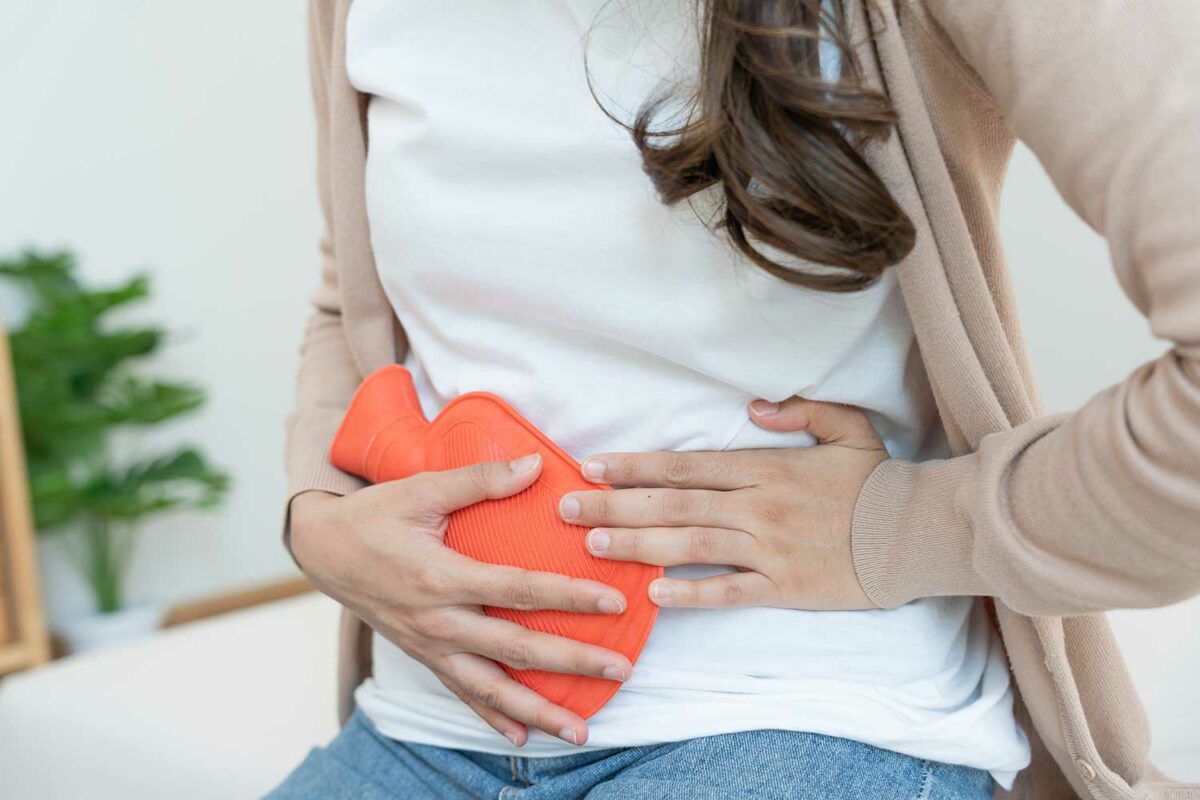The menstrual cycle is a natural part of almost every woman’s life, but it can bring with it a range of challenges, from physical discomfort to emotional stress. Fortunately, thanks to advances in technology and innovation in women’s health, there are now more options than ever to manage your cycle comfortably and less stressfully. In this article, we will explore some of the most innovative solutions that can help you experience your menstrual period with greater peace of mind.
Menstrual briefs: comfort and protection
Menstrual briefs represent one of the most significant innovations in recent years for cycle management. There are two types: the first are designed to absorb menstrual flow without the use of tampons or external pads, while the most popular and widely used are the Briefs that allow any bleeding to be contained that should overflow from the pad and make sure that the clothes do not get stained.
With highly absorbent and breathable materials, menstrual briefs provide protection against leakage, keeping the skin dry and preventing odor, all without compromising comfort.
App for cycle monitoring
In an era dominated by technology, menstrual cycle monitoring apps are a game changer for millions of women worldwide. These apps not only offer the ability to track cycle dates, but also provide valuable insights into ovulation, fertility, and related symptoms, transforming the way women experience and manage their periods. Let’s take a closer look at how these apps can help you navigate your menstrual cycle with greater awareness and less stress.
Customization and prediction
Cycle monitoring apps allow you to record a wide range of menstrual cycle data, including duration, flow intensity, and associated symptoms such as cramping, bloating, and mood changes. Using advanced algorithms, these apps can analyze your data over time to accurately predict the start of your next cycle, ovulation days, and periods of increased fertility. This personalization makes it easier to plan activities, trips, and manage expectations related to your physical and emotional well-being.
Symptom monitoring and general well-being
In addition to cycle prediction, these apps offer the ability to monitor a wide range of symptoms and lifestyle habits, such as sleep, physical activity, nutrition, and stress. This holistic monitoring can help identify any patterns or triggers that affect your cycle and your overall well-being, allowing you to make targeted lifestyle changes to improve your menstrual health.
Education and support
Many cycle monitoring apps include educational sections that offer reliable information on reproductive health, menstruation, and fertility. These resources can be particularly useful for those seeking to learn more about the menstrual cycle or for those with specific questions about women’s health. In addition, some apps offer discussion forums or the ability to consult experts, creating a supportive community where experiences and advice can be shared.
Privacy and data security
In using cycle tracking apps, it is critical to consider the privacy and security of your personal information. Choose apps that offer transparency about their privacy policies and use advanced security measures to protect user information. Please read the terms of service and privacy settings carefully to ensure that your information is treated confidentially.
Menstrual cycle tracking apps have become indispensable tools for many women, offering not only the ability to keep track of their periods, but also to gain a greater understanding of their bodies and their reproductive health. With the right app, you can turn managing your cycle into an informed, personalized and less stressful process, allowing you to experience each stage of your cycle with greater peace of mind and control.
Supplements and nutrition: natural allies for a peaceful menstrual cycle
Management of menstrual cycle-related symptoms is not only through the use of specific products or advanced technologies, but also through a holistic approach that includes diet and supplements. Proper nutrition can play a key role in mitigating cycle discomforts such as cramping, bloating, and mood swings. Let’s see how supplements and conscious food choices can become valuable allies in experiencing the menstrual period with greater peace of mind.
Magnesium: The anti-cramping mineral
Magnesium is known for its muscle-relaxing properties, which can be especially helpful in relieving menstrual cramps. Supplementing the diet with magnesium, through foods such as leafy green vegetables, nuts, seeds, and whole grains, or through supplements, can help reduce the intensity and duration of cramps, improving sleep quality and reducing stress.
Vitamin B6: hormone balance and mood
Vitamin B6 plays a key role in regulating hormones and may be particularly effective in improving symptoms of premenstrual syndrome (PMS), including mood swings and irritability. Foods rich in vitamin B6 include chicken, turkey, fish, sweet potatoes and bananas. Vitamin B6 supplements may be an option for those who cannot obtain sufficient amounts from food sources.
Evening primrose oil: an aid to skin and emotional well-being
Evening primrose oil is rich in gamma-linolenic acid (GLA), an omega-6 fatty acid that can help manage symptoms of PMS, such as breast tenderness, irritability, and bloating. It is also known for its benefits on skin health, being able to improve conditions such as eczema or acne, which are often aggravated by the cycle.
Iron: fighting fatigue
Blood loss during menstruation can lead to decreased iron levels, especially in women with heavy flows, causing fatigue and weakness. Supplementing the diet with iron sources such as lean red meat, poultry, fish, legumes and green leafy vegetables can help maintain adequate iron levels. In some cases, iron supplements may be recommended, always under the supervision of a physician.
Water and balanced nutrition
Maintaining adequate hydration by drinking plenty of water and consuming water-rich foods such as fruits and vegetables can help reduce bloating and promote an overall feeling of well-being. Avoiding overly salty foods, caffeine, and alcohol in the days leading up to your period can also help minimize symptoms such as bloating and irritability.
Taking a holistic approach to menstrual cycle management, including a balanced diet and the use of specific supplements, can offer significant symptom relief and improve overall well-being. It is important to remember that every woman is unique, and what works for one may not be effective for another. Therefore, it is advisable to consult a physician or nutritionist before making any significant changes to your diet or starting a new supplement regimen to ensure that your choices are appropriate for your needs and health condition.
Natural therapies and relaxation: strategies for a more peaceful menstrual cycle
Management of menstrual symptoms is not only limited to the physical aspect, but also includes mental and emotional well-being. Natural therapies and relaxation techniques can offer valuable support to relieve stress, pain, and improve mood during the menstrual cycle. We explore some of the most effective strategies for integrating a holistic approach to women’s health.
Yoga and mindfulness
Yoga, particularly gentler, meditative practices such as Yin Yoga or Restorative Yoga, can be especially beneficial during the menstrual cycle. These practices help relax the body and mind, reducing cramping and promoting a sense of inner peace. Mindfulness and meditation can also help manage stress and mood swings by increasing awareness of one’s body and emotions.
Aromatherapy
Aromatherapy uses essential oils extracted from plants to improve physical and emotional well-being. Some oils, such as those from lavender, chamomile, and clary sage, are known for their relaxing properties and can help relieve PMS symptoms and cramps. The use of diffusers, diluted topical application, or the addition of essential oils to the bath can provide moments of deep relaxation and well-being.
Relaxation and breathing techniques
Guided relaxation techniques and deep breathing are powerful tools for reducing stress and improving pain management. Diaphragmatic breathing, in particular, can help calm the nervous system and reduce the intensity of menstrual cramps. Practicing these techniques regularly can not only offer relief during your period, but also improve your quality of daily life.
Regular exercise
Regular physical activity is essential to maintain good hormonal balance and reduce menstrual symptoms. Light exercises such as walking, swimming or cycling can stimulate circulation, relieve cramps and improve mood through the release of endorphins, known as the hormones of happiness. It is important to listen to your body and choose activities that feel pleasant and not too strenuous during your cycle.
Balanced nutrition and hydration
A balanced diet rich in fruits, vegetables, whole grains, and lean proteins can support the body during the menstrual cycle by providing the nutrients needed to combat fatigue and cramping. The importance of hydration cannot be underestimated: drinking plenty of water helps reduce swelling and promotes an overall feeling of well-being.
Adopting natural therapies and relaxation techniques can transform the menstrual cycle experience, making it more manageable and less stressful. Integrating these practices into your daily routine not only during your cycle, but as part of a healthy lifestyle, can significantly improve your physical and emotional well-being. Remember that the key is to find what works best for you by listening to and respecting your body’s needs.
€13,50 – €15,10Price range: €13,50 through €15,10



